Routers and dust extraction |
|
|||
 |
||||
|
|
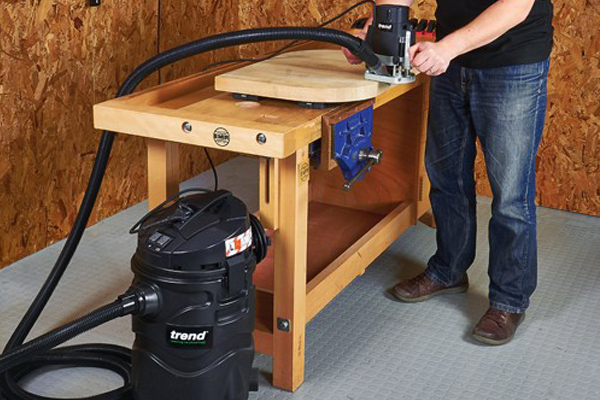 |
|
If you have never used a router before, you may be surprised at how much dust they create. It’s not just large chips or shavings either, routers also produce a large amount of very fine dust that can find its way absolutely everywhere. The most common solution to this problem is a dust extraction system, usually in the form of a vacuum, which will suck up the chips and dust through a hose attached to your router or router table. Common household vacuums are not suitable as dust extractors unless specified for this use. |
|
Trend T31 wet and dry vacuum extractor |
||||
 |
Trend currently produce a that’s designed for various hobby, DIY and light trade uses for workshops, or garages. It has a powerful but quiet 1400 watt silenced motor (max. 1600 watt). It features auto-start power tool socket with power take off, so you can plug in a power tool (max. 2200W, min. 50W) and it can be run directly off the unit and a 5-second run-on delay. |
|||
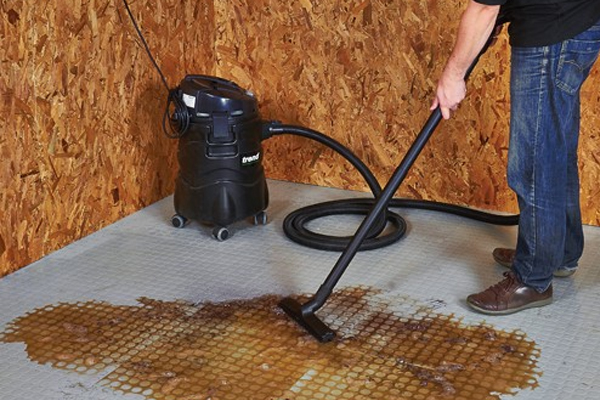 |
This T31 vacuum has a large capacity of 35 litres and container outlet plug for emptying liquids easily, with an impact resistant plastic container with castors, and an extra-long seven-metre power cable and a five-metre hose with a power tool adapter. It is a dust class category L extractor, rated to EN60335-2-69, for dust with work space limit values of less than 1 mg/m3. It comes complete with a floor cleaning kit, crevice tool, power tool adapter, upholstery tool, no foam filter, and HEPA cartridge filter with nylon pre-filter. |
|||
Why use a dust extraction system? |
||||
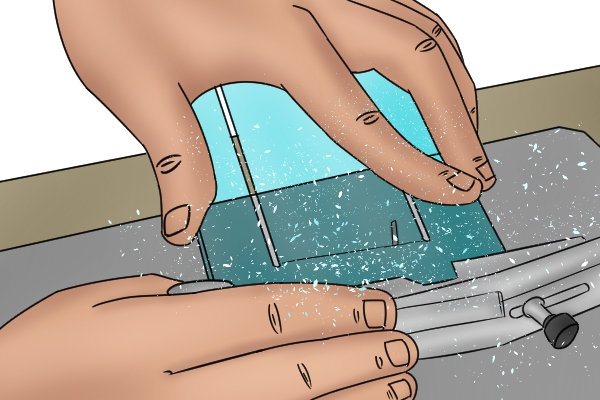 |
To keep things cleanThe dust created when routing can cling to hair, clothes, tools and other items in your workshop and is difficult to sweep up or clean away fully. This is particularly true when routing plastics, as the shavings become statically charged and cling to any surface. No matter what your routing task, a dust extraction system helps to remove the waste at the cutting stage, so any cleaning up after is kept to a minimum. |
|||
 |
For your healthProlonged inhalation of dust and debris is harmful. A top-quality dust extractor will remove not just the larger chips and bits of debris, but also the particles that cannot be seen with the naked eye, which are just as harmful to your lungs. If you rout a lot of treated woods, or materials with coatings, you are especially at risk as the toxic chemicals in these finishes enter the air when the material is cut. You should also consider a dust extractor if you rout a lot of oak or beech, as the dust produced when routing these is considered carcinogenic. |
|||
 |
||||
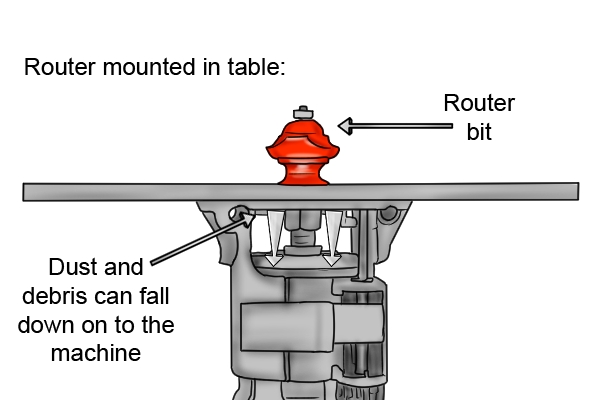 |
For the health of your routerIf not for yourself, then do it for your router. Over time, dust and resins can build up in the machine’s housing and create problems. This is particularly common when table routing, as waste material drops down into the machine and cannot be removed as easily. An accumulation of dirt and dust on the motor can be especially problematic as it can cause the internal parts to overheat and become less efficient. |
|||
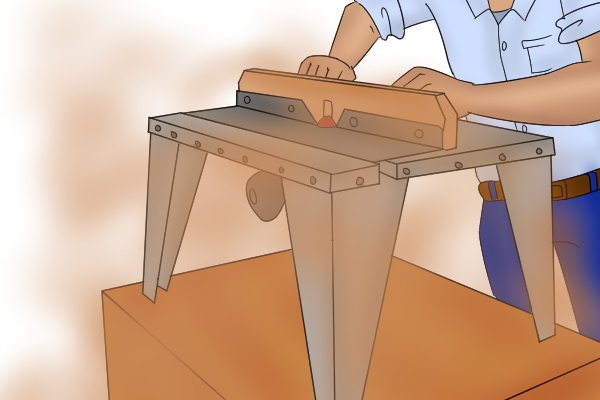 |
To increase visibilityHaving everything coated with dust and chippings can decrease your visibility when routing, making it harder to see the bit or the markings on your material. As well as this, when you are concentrating on making a cut, you don't want chips flying up and hitting you in the face. |
|||
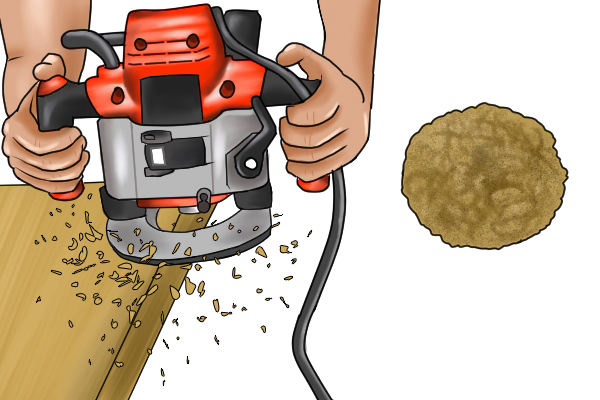 |
For some applications, such as routing MDF (medium density fibreboard), using a dust extraction system of some kind is absolutely essential. MDF is made by fusing tiny fragments of hardwood and softwood together using a wax or resin binder, before subjecting them to extreme temperatures and pressures. When cut, MDF produces a large amount of very fine dust, so where possible, any routing in this material should be done outside or in a well-ventilated area. |
|||
 |
||||
Methods of dust extraction? |
||||
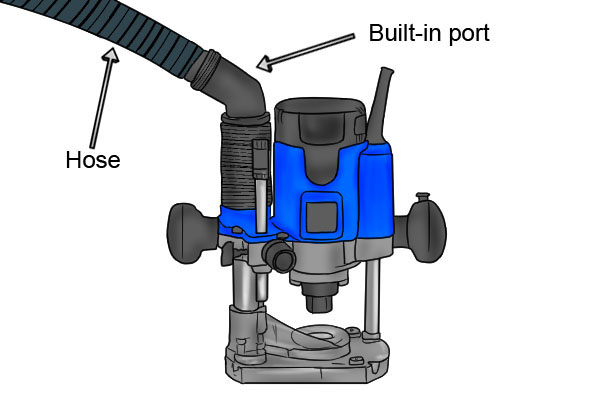 |
Hand-held routingSome routers have dust extraction ports built-in to their design. At the base of the column is usually a plastic ring which helps to enclose the dust and chippings, and direct them towards the port, to be extracted. Some manufacturers claim that built-in ports can extract more dust compared with separate extraction adapters but, the weight of the hose can make the tool feel top-heavy and make it more difficult to use. |
|||
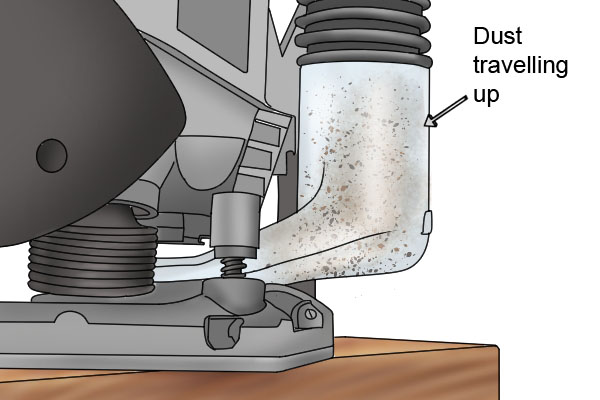 |
A lighter option is to use a dust extraction adapter or spout. A dust extraction adapter usually comes in the form of a plastic ring which fits into the base of the router and is either clipped or screwed in. It has a port at one end, designed to fit around the hose of a vacuum. When the router and vacuum are switched on, the waste material expelled by the router bit travels up through the adapter’s port and into the vacuum. High-quality routers will usually have an extraction adapter included. |
|||
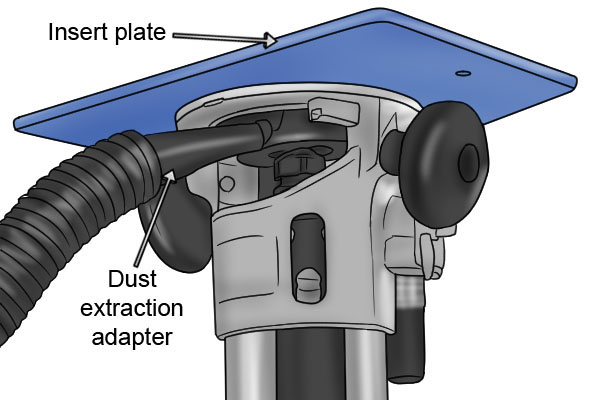 |
Router tablesThe extractors mentioned above are not solely for hand-held operations, you can also use them when table routing. After you have mounted your router upside down in a table, fit the dust extraction adapter into the router’s base, and simply attach the hose. While this will help to alleviate some of the dust, a lot can still be flung out over the top of the router table. |
|||
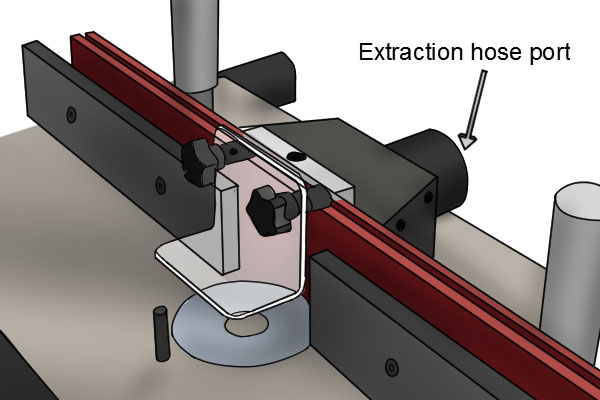 |
For more efficient extraction, you should consider a fence-mounted dust extractor. This involves connecting the hose of your workshop vacuum to the back of your router table fence, in order to catch the waste material flying off the router bit. This system is most effective when routing the edges of materials, as the bit’s rotation tends to throw the debris back towards the fence. |
|||
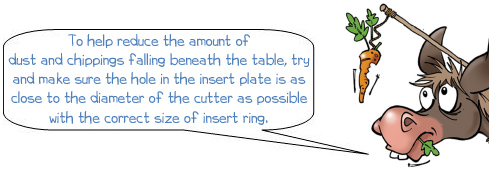 |
||||
Why shouldn't you use a regular household vacuum for dust extraction? |
||||
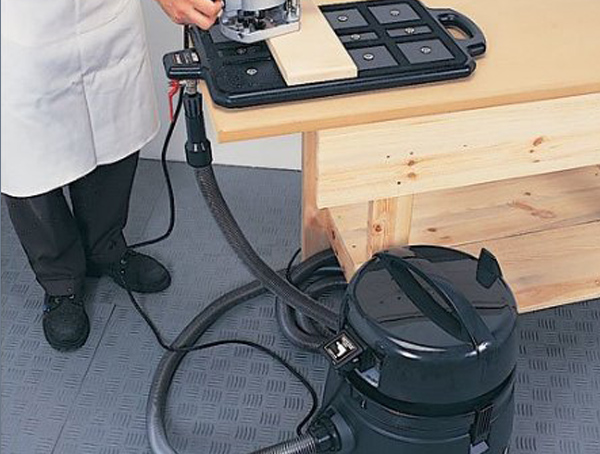 |
Though you probably can hook up a regular vacuum cleaner to your router and use it for dust extraction, there are several reasons why you shouldn't:
|
|||
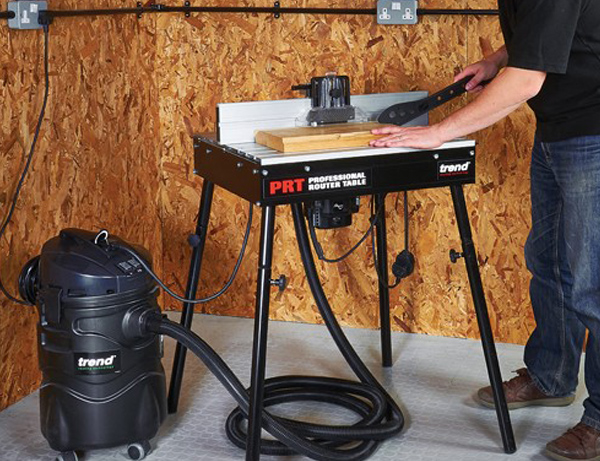 |
|
|||
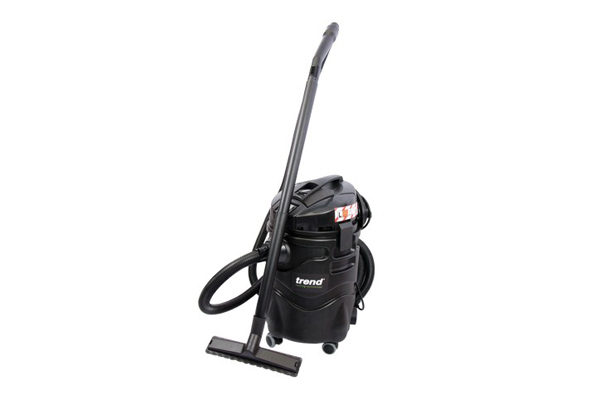 |
Though a proper workshop vacuum may cost more than a regular household one, you can rest assured that you're using the right tool for the job. Many workshop vacuums come with features designed to make workshop dust extraction a lot easier, such as power tool adapters and special filtering systems to prevent clogging; some models can even suck up wet materials as well! |
|||







